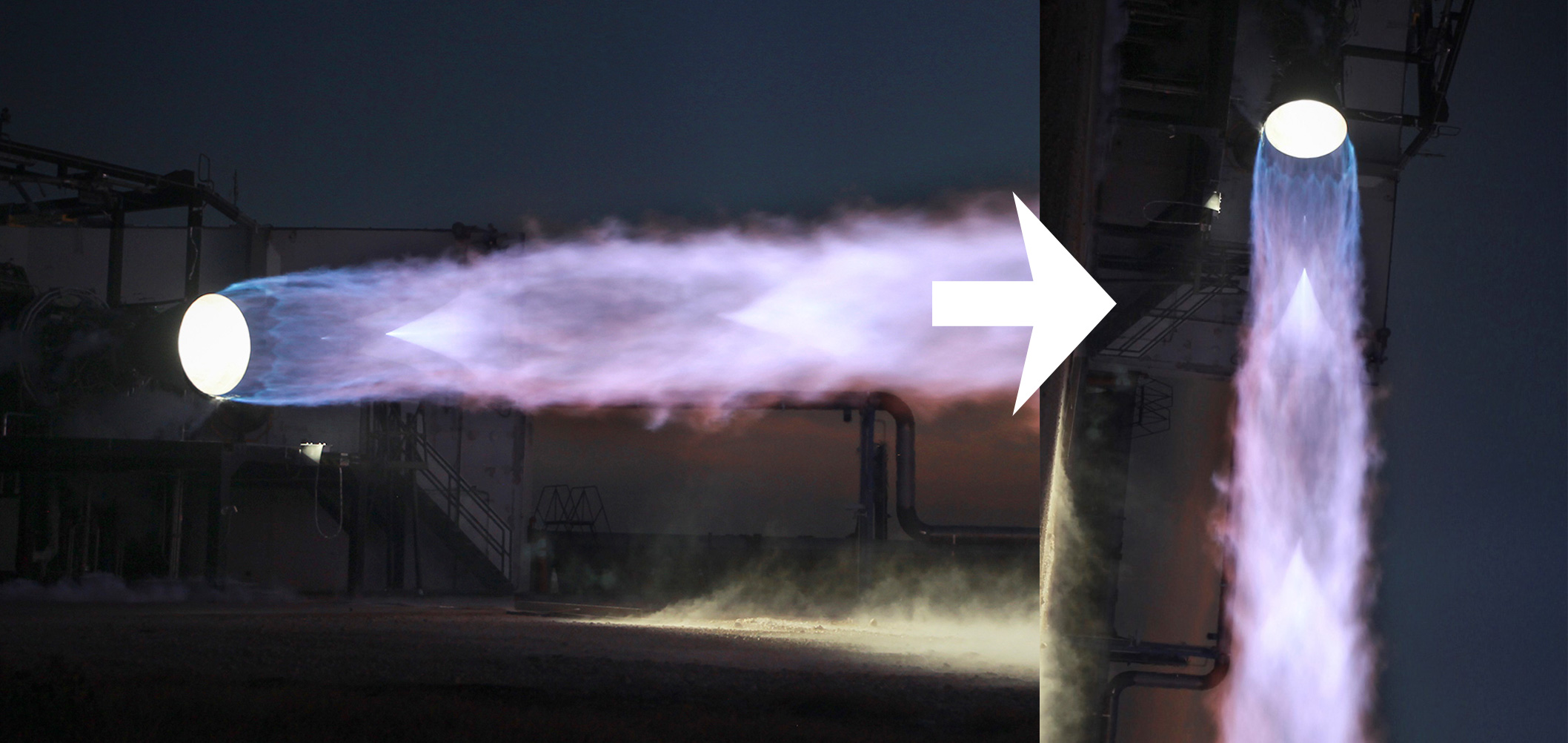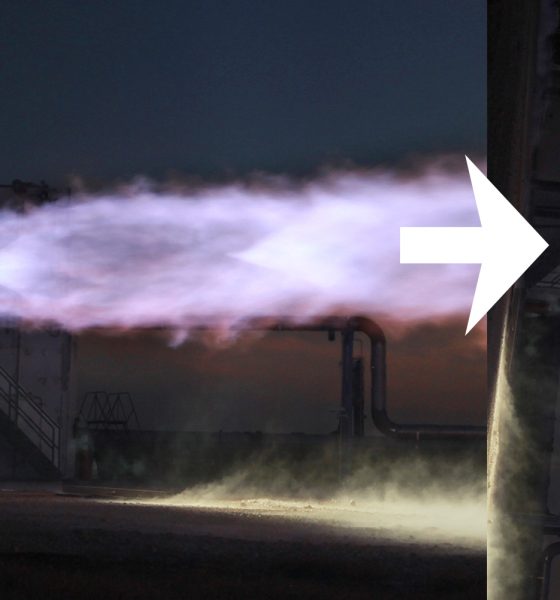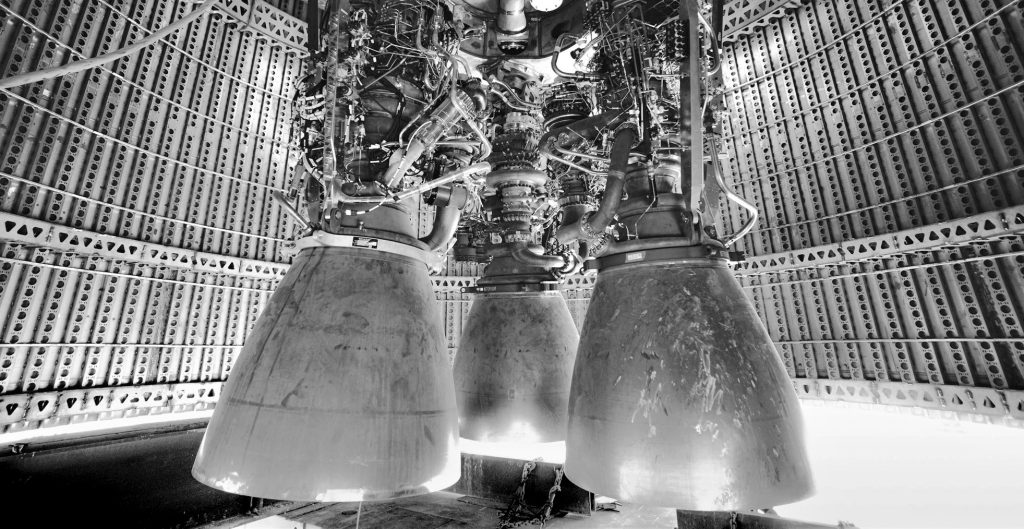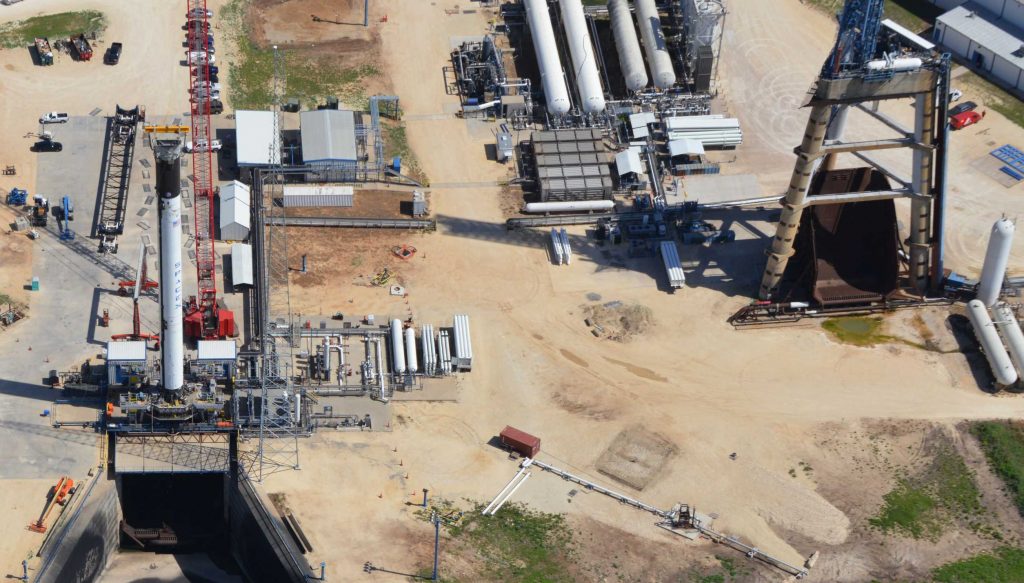

News
SpaceX's new Starship test stand to make life a little easier for Raptor engine engineers
SpaceX recently debuted a new rocket engine test stand at its Central Texas development facilities and one specific aspect of the so-called ‘tripod stand’ could make life a lot easier for Starship’s Raptor engine engineers.
The success of SpaceX’s extremely ambitious Starship spacecraft and Super Heavy boosters hinges heavily on the prior success of a next-generation rocket engine the company is developing itself. Known as Raptor, the engine is likely one of the most complex ever developed, owing to its use of a combustion cycle that’s as challenging and unforgiving as it is efficient. That efficiency is the draw.
The decision to base the Starship launch system around methane and oxygen propellant – relatively dense, safe to handle, and easy to generate on Mars – means that it can never be as efficient as a rocket based on hydrogen and oxygen, the pinnacle of chemical combustion-based propulsion. For a methalox rocket as nominally reusable as Starship, going to extremes to eke even a smidge of extra efficiency out of its Raptor engines is a reasonable – if not necessary – decision. However, that pursuit of efficiency carries many hurdles with it, some of which can even be exacerbated by the equipment used to test those engines on the ground.

Raptor is less than unique in this particular case but SpaceX’s engine development and testing has matured to the point that the stands it’s relied on for static fires have become a detriment to the engine’s progress. Specifically, aside from Starhopper, all previous Raptor static fires have been performed with engines installed horizontally in test bays located at SpaceX’s McGregor, Texas development facilities. While in flight, Raptor engines will theoretically never experience wear and tear similar to the unique conditions imposed by horizontal testing – engine burns will almost invariably exert forces along a vertical (up and down) axis.
To almost anyone else, even other engine development companies, this might seem like an insignificant difference. Built around the full-flow staged combustion (FFSC) cycle and meant to be unprecedentedly reusable and reliable, the Raptor engine is not quite as forgiving. Since the engine’s inaugural full-scale static fire test just one year ago, SpaceX CEO Elon Musk has noted several times that Raptor could benefit from new vertical test stands.
Speaking in October 2019, Musk stated that a new vertical test stand would “hopefully allow simplification of Raptor design, as pump shaft wear & drainage is better in vertical config.” More generally, testing Raptor engines vertically would also be “more representative of flight [conditions]”, allowing SpaceX to live up to its proven “test as you fly” philosophy.

Indeed, aside from Starhopper’s two successful test flights and a handful of static fires, Raptor has performed barely any vertical testing despite more than 3200 seconds of static fires completed with 18 full-scale engine prototypes in the last 12 months alone. Including subscale engines tested from 2016 through 2018, SpaceX’s Raptor engine has likely completed some 5000 seconds (>80 minutes) of test fires over the course of three and a half years of development.
Aside from allowing SpaceX engineers to potentially simplify the Raptor engine design and test the Starship engines in conditions much closer to what they will experience in flight, the addition of a new dedicated test stand – on top of two existing horizontal bays – should allow even more testing to be done in a given time-frame. The more testing that can be done, the more engines SpaceX can quickly qualify for flight, and given that every Starship/Super Heavy pair could require up to 43 new Raptor engines, SpaceX will need all the testing capacity it can get.
Check out Teslarati’s Marketplace! We offer Tesla accessories, including for the Tesla Cybertruck and Tesla Model 3.

News
Tesla Model Y Standard Long Range RWD launches in Europe
The update was announced by Tesla Europe & Middle East in a post on its official social media account on X.

Tesla has expanded the Model Y lineup in Europe with the introduction of the Standard Long Range RWD variant, which offers an impressive 657 km of WLTP range.
The update was announced by Tesla Europe & Middle East in a post on its official social media account on X.
Model Y Standard Long Range RWD Details
Tesla Europe & Middle East highlighted some of the Model Y Standard Long Range RWD’s most notable specs, from its 657 km of WLTP range to its 2,118 liters of cargo volume. More importantly, Tesla also noted that the newly released variant only consumes 12.7 kWh per 100 km, making it the most efficient Model Y to date.
The Model Y Standard provides a lower entry point for consumers who wish to enter the Tesla ecosystem at the lowest possible price. While the Model 3 Standard is still more affordable, some consumers might prefer the Model Y Standard due to its larger size and crossover form factor. The fact that the Model Y Standard is equipped with Tesla’s AI4 computer also makes it ready for FSD’s eventual rollout to the region.
Top Gear’s Model Y Standard review
Top Gear‘s recent review of the Tesla Model Y Standard highlighted some of the vehicle’s most notable features, such as its impressive real-world range, stellar infotainment system, and spacious interior. As per the publication, the Model Y Standard still retains a lot of what makes Tesla’s vehicles well-rounded, even if it’s been equipped with a simplified interior.
Top Gear compared the Model Y Standard to its rivals in the same segment. “The introduction of the Standard trim brings the Model Y in line with the entry price of most of its closest competition. In fact, it’s actually cheaper than a Peugeot e-3008 and costs £5k less than an entry-level Audi Q4 e-tron. It also makes the Ford Mustang Mach-E look a little short with its higher entry price and worse range,” the publication wrote.
Elon Musk
Elon Musk’s xAI bets $20B on Mississippi with 2GW AI data center project
The project is expected to create hundreds of permanent jobs, dramatically expand xAI’s computing capacity, and further cement the Mid-South as a growing hub for AI infrastructure.

Elon Musk’s xAI plans to pour more than $20 billion into a massive new data center campus in Southaven, Mississippi, marking the largest single economic development project in the state’s history.
The project is expected to create hundreds of permanent jobs, dramatically expand xAI’s computing capacity, and further cement the Mid-South as a growing hub for AI infrastructure.
xAI goes MACROHARDRR in Mississippi
xAI has acquired and is retrofitting an existing facility in Southaven to serve as a new data center, which will be known as “MACROHARDRR.” The site sits near a recently acquired power plant and close to one of xAI’s existing data centers in Tennessee, creating a regional cluster designed to support large-scale AI training and inference.
Once completed, the Southaven facility is expected to push the company’s total computing capacity to nearly 2 GW, placing it among the most powerful AI compute installations globally. The data center is scheduled to begin operations in February 2026.
Gov. Tate Reeves shared his optimism about the project in a press release. “This record-shattering $20 billion investment is an amazing start to what is sure to be another incredible year for economic development in Mississippi. Today, Elon Musk is bringing xAI to DeSoto County, a project that will transform the region and bring amazing opportunities to its residents for generations. This is the largest economic development project in Mississippi’s history,” he said.
xAI’s broader AI ambitions
To secure the investment, the Mississippi Development Authority approved xAI for its Data Center Incentive program, which provides sales and use tax exemptions on eligible computing hardware and software. The City of Southaven and DeSoto County are also supporting the project through fee-in-lieu agreements aimed at accelerating development timelines and reducing upfront costs.
Founded in 2023 by Elon Musk, xAI develops advanced artificial intelligence systems focused on large-scale reasoning and generative applications. Its flagship product, Grok, is integrated with the social media platform X, alongside a growing suite of APIs for image generation, voice, and autonomous agents, including offerings tailored for government use.
Elon Musk highlighted xAi’s growth and momentum in a comment about the matter. “xAI is scaling at an immeasurable pace — we are building our third massive data center in the greater Memphis area. MACROHARDRR pushes our Colossus training compute to ~2GW – by far the most powerful AI system on Earth. This is insane execution speed by xAI and the state of Mississippi. We are grateful to Governor Reeves for his support of building xAI at warp speed,” Musk said.
Elon Musk
Tesla AI Head says future FSD feature has already partially shipped

Tesla’s Head of AI, Ashok Elluswamy, says that something that was expected with version 14.3 of the company’s Full Self-Driving platform has already partially shipped with the current build of version 14.2.
Tesla and CEO Elon Musk have teased on several occasions that reasoning will be a big piece of future Full Self-Driving builds, helping bring forth the “sentient” narrative that the company has pushed for these more advanced FSD versions.
Back in October on the Q3 Earnings Call, Musk said:
“With reasoning, it’s literally going to think about which parking spot to pick. It’ll drop you off at the entrance of the store, then go find a parking spot. It’s going to spot empty spots much better than a human. It’s going to use reasoning to solve things.”
Musk said in the same month:
“By v14.3, your car will feel like it is sentient.”
Amazingly, Tesla Full Self-Driving v14.2.2.2, which is the most recent iteration released, is very close to this sentient feeling. However, there are more things that need to be improved, and logic appears to be in the future plans to help with decision-making in general, alongside other refinements and features.
On Thursday evening, Elluswamy revealed that some of the reasoning features have already been rolled out, confirming that it has been added to navigation route changes during construction, as well as with parking options.
He added that “more and more reasoning will ship in Q1.”
🚨 Tesla’s Ashok Elluswamy reveals Nav decisions when encountering construction and parking options contain “some elements of reasoning”
More uses of reasoning will be shipped later this quarter, a big tidbit of info as we wait v14.3 https://t.co/jty8llgsKM
— TESLARATI (@Teslarati) January 9, 2026
Interestingly, parking improvements were hinted at being added in the initial rollout of v14.2 several months ago. These had not rolled out to vehicles quite yet, as they were listed under the future improvements portion of the release notes, but it appears things have already started to make their way to cars in a limited fashion.
Tesla Full Self-Driving v14.2 – Full Review, the Good and the Bad
As reasoning is more involved in more of the Full Self-Driving suite, it is likely we will see cars make better decisions in terms of routing and navigation, which is a big complaint of many owners (including me).
Additionally, the operation as a whole should be smoother and more comfortable to owners, which is hard to believe considering how good it is already. Nevertheless, there are absolutely improvements that need to be made before Tesla can introduce completely unsupervised FSD.








